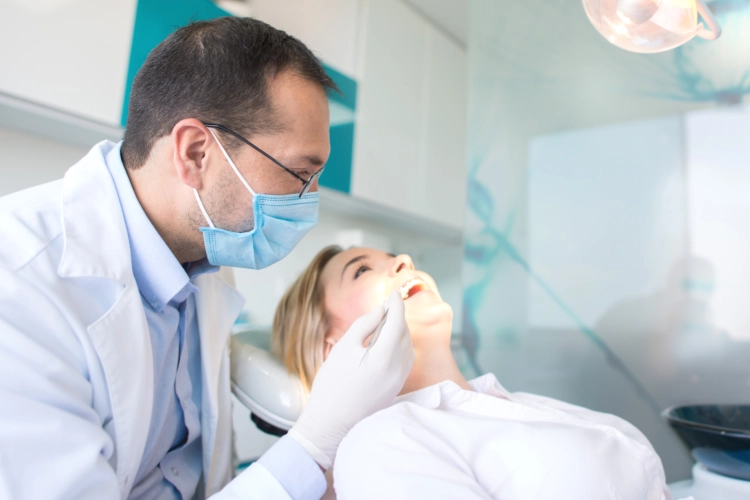Preventive Dentistry in Surrey
Protect Your Smile with Proactive Dental Care
At Heavenly Dental in Surrey, we believe the best dental treatment is prevention. Our preventive dentistry services are designed to help you maintain healthy teeth and gums, avoid complex procedures, and enjoy a confident smile for life. From professional cleanings and gum care to personalized oral hygiene education, we’re here to support your long-term oral health.

Professional Dental Cleanings: Your First Line of Defense
Regular cleanings are essential for removing plaque and tartar buildup that daily brushing can’t eliminate. Every cleaning at Heavenly Dental includes:
- Scaling
Removes plaque and hardened tartar from all surfaces of your teeth.
- Manual Scaling: Offers detailed precision.
- Electric Scaling: Efficient for mild to moderate buildup.
- Ultrasonic Scaling (Cavitron): Uses vibrations to break apart tartar before manual finishing.
- Root Planing
Cleans deep below the gumline to treat and prevent gum disease.
- Helps reduce gum inflammation and encourages tissue healing.
- May require local anesthetic and multiple visits in severe cases.
- Polishing
Smooths tooth surfaces and removes minor stains.
- Prophy Jet Polishing: Uses a high-pressure water and baking soda spray.
- Rubber Cup Polishing: A gentle paste applied with a rotating tool.
Cleaning Frequency:
Most patients benefit from a cleaning every six months, while those with gum concerns may need appointments every three to four months for optimal control.
Start Prevention Early: A Healthy Habit for Life
Preventive care isn’t just for adults; it begins in childhood. Establishing strong habits early helps build cavity-resistant teeth and positive dental experiences.
Tips for young children:
- Ensure drinking water contains at least 1 ppm fluoride.
- Start brushing as soon as the first tooth appears.
- Begin flossing when teeth touch side-by-side.
These early steps contribute to lifelong oral wellness.
Smart Brushing Tips for Stronger Teeth
- Use a soft-bristled toothbrush to protect enamel.
- Brush vertically, not side-to-side.
- Choose fluoride toothpaste with tartar control.
- Apply gentle pressure and a pea-sized amount of paste.
Our team is happy to review your technique during any visit to help you get the most out of your routine.
Flossing: Don’t Skip This Essential Step
Flossing clears plaque and food particles from between teeth—where your brush can’t reach.
Effective flossing tips:
- Floss once a day, ideally before brushing.
- Use any type you prefer (waxed, unwaxed, string, or ribbon).
- Focus on technique, not just repetition.
We’re happy to demonstrate proper flossing during your next cleaning.
Managing Bad Breath (Halitosis)
Chronic bad breath is often a sign of underlying oral issues like gum disease or bacterial buildup. Common causes include:
- Bacteria on the tongue
- Plaque accumulation around teeth
- Infections or deep gum pockets
Halitosis Treatment Includes:
- Full oral exam and health review
- Targeted cleaning of tongue, teeth, and gums
- Treatment of any infections or decay
- Professional recommendations for tongue scrapers or specialized mouthwash
Most patients experience significant improvement once underlying dental issues are treated.
Book Your Preventive Dental Appointment in Surrey
Don’t wait for problems to arise. Regular cleanings and checkups at Heavenly Dental in Surrey can help you maintain a strong, healthy smile and avoid costly procedures in the future.
📍 Visit us in Surrey, BC
📞 Call us today to schedule your next preventive care visit and invest in your smile for years to come.
